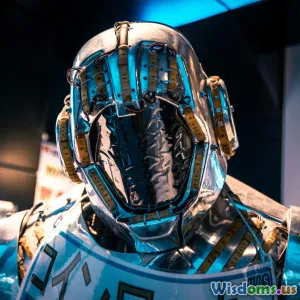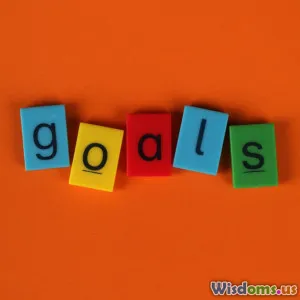
Unbelievable Examples of Dreams That Came True in History
10 min read Explore astonishing historical dreams that remarkably came true, revealing the power of vision and destiny in shaping our world. (0 Reviews)
Unbelievable Examples of Dreams That Came True in History
Introduction
Dreams have long fascinated humanity—not just the nightly journeys our brains create, but the grand visions and aspirations that have the power to change the course of history. Imagine dreaming not only in sleep but also awake: anticipating the future, visualizing revolutionary inventions, or foreseeing momentous events with uncanny precision. This article explores astonishing examples of dreams that came true in history, where the boundary between imagination and reality blurred, inspiring us to believe in the human potential to shape destiny.
From prophetic premonitions to revolutionary scientific foretellings, the tales of these dreams are as inspiring as they are unbelievable. They invite us to reflect on the nature of intuition, the subconscious mind, and the power of human ambition. Join us as we embark on a journey through time, unveiling the most celebrated and mysterious dreams that have shaped human civilization.
Prophetic Dreams That Foretold Life-Changing Events
Abraham Lincoln’s Premonition
One of the most haunting examples is that of Abraham Lincoln’s dream before his assassination. According to historical records and accounts from his close associates, Lincoln dreamed about his own death shortly before it happened. In the dream, he saw a corpse lying in the White House, surrounded by mourners. Upon inquiring, he was told the deceased was the President, deeply unsettling him. Days later, Lincoln was assassinated by John Wilkes Booth on April 14, 1865.
This eerie premonition emphasizes the mysterious ways our subconscious mind might process danger signals or societal tensions. While skeptics attribute it to coincidence, this dream remains one of the most chilling historical accounts of foresight.
The Titanic Dream of the Architect
Henry Tingle Wilde, the chief officer aboard the RMS Titanic, reportedly had a vivid dream about the ship’s catastrophic sinking. Before the Titanic embarked on its maiden voyage, Wilde, an experienced seafarer, believed in ominous signs and shared concerns about the ship’s safety. His premonition was rooted in a dream where he witnessed the vessel engulfed by the icy Atlantic.
Tragically, the Titanic sank after striking an iceberg in 1912, validating Wilde’s apprehensions. His vision exemplifies how dreams might integrate real-world anxieties or information that our conscious mind overlooks.
Nostradamus: Dreams and Prophecies
Michel de Nostredame, widely known as Nostradamus, was famous for his prophetic quatrains penned in the 16th century. Many of his predictions have been retrospectively interpreted as grand visions of wars, natural disasters, and significant world events. More interestingly, Nostradamus claimed that his prophecies and some of his best predictive texts were inspired by dreams and meditative trances.
Though controversial and heavily scrutinized, Nostradamus’s work has intrigued historians and dream scholars alike, fueling the belief that dreams can unlock powerful future insights.
Visionary Scientific and Technological Dreams
Nikola Tesla’s Inventive Dreams
Nikola Tesla, one of history’s most brilliant inventors, famously claimed that many of his groundbreaking ideas came to him through intense visualizations and vivid dreams. Instead of traditional blueprints, Tesla mentally constructed and refined his inventions in his imagination before ever building a physical prototype.
A notable example is the induction motor, whose design Tesla envisaged in his mind fully detailed. This particular process saved him years of trial and error and was vital to the electrical technology revolution.
Elias Howe and the Sewing Machine
Elias Howe’s invention of the modern sewing machine is a classic tale of dream-inspired innovation. Frustrated by his inability to design a practical sewing machine, Howe dreamed of being captured by cannibals who were threatening his life. The key to escape was a sewing machine with an eye at the needle’s point — the exact design limitation puzzling Howe.
Upon waking, he realized the critical element to his invention and successfully patented the design, revolutionizing the garment industry forever.
Otto Loewi’s Dream and Neurochemistry Breakthrough
Otto Loewi, the Nobel Prize-winning physiologist, reportedly dreamed of an experiment that demonstrated chemical transmission of nerve impulses. In his dream, he visualized how to design a simple experiment using frog hearts that would prove this concept.
Loewi woke up, immediately conducted the experiment, and confirmed neurotransmission, laying the foundation for modern neurochemistry. His discovery illuminated the relationships between nerves and chemicals, drastically advancing medical science.
Dreams That Forged Cultural and Artistic Milestones
Mary Shelley’s "Frankenstein"
Arguably one of the most influential literary creations sparked by a dream is Mary Shelley's gothic novel Frankenstein. Shelley's inspiration reportedly came from a vivid nightmare in which she envisioned a scientist bringing a creature to life through mysterious powers.
This vision led to the birth of a new literary genre—science fiction—and sparked conversations about ethics, technology, and human ambition that continue today.
Paul McCartney’s Tune in a Dream
Iconic musician Paul McCartney famously said that the melody for Yesterday came to him in a dream so clear that he initially feared he'd unconsciously plagiarized someone else’s song. This song remains one of the most covered and beloved tracks in music history.
This underscores how creative insights often stem from the subconscious, where dreams serve as a fertile ground for inspiration.
Why Do Some Dreams Come True? Insights and Theories
The fulfillment of dreams can be attributed to a combination of psychological phenomena and personal determination:
- Subconscious Problem-Solving: Our brains may process information and concerns non-consciously during sleep, offering predictions or inspiration.
- Strong Desire and Focus: Dreams aligned with an individual’s passion may manifest because of relentless pursuit and action.
- Synchronicity and Coincidence: Sometimes, circumstances align perfectly, resulting in seemingly prophetic outcomes.
Renowned psychologist Carl Jung emphasized dreams as a bridge between conscious experience and the deeper unconscious, suggesting that paying attention to dreams can reveal hidden guidance or insights.
Conclusion
The tapestry of history is woven with remarkable stories where the realm of dreams blurred into reality in astonishing ways. From presidents foreseeing their fate, inventors crafting innovations in their sleep, to artists conjuring masterpieces, dreams have often served as catalysts for extraordinary outcomes.
These accounts challenge us to reconsider the ways we perceive dreams—not merely as fleeting images or illusions but as powerful tools for insight, creativity, and foresight. Whether prophetic or inspirational, such dreams encourage us to cultivate our own imagination and intuition.
Ultimately, the greatest takeaway is that dreams, when combined with action and belief, can inspire real transformation. So, the next time you close your eyes, remember: you might just be gazing into the future.
References and Further Reading:
- "Abraham Lincoln’s Dream of Death," Historical Journal of Dreams.
- Segrave, Kerry. Titanic Disaster and Survival Dreams. Nautical Press, 2009.
- Josephine L. McGill, Dreams and Scientific Discovery. Science History Review, 2017.
- Mary Shelley, Frankenstein, 1818.
- "Neurochemistry and Dreams: The Otto Loewi Story," Neuroscience Letters.
Rate the Post
User Reviews
Popular Posts
















